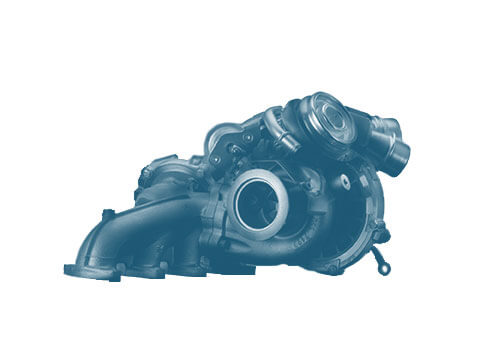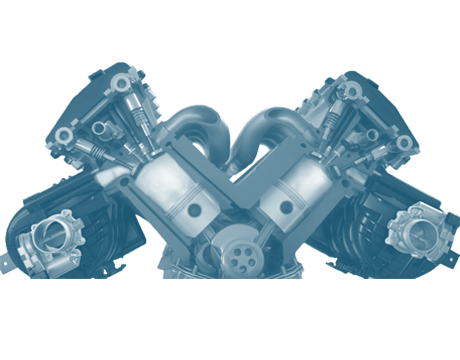Charge-air cooler
Charge-air coolers are tasked with the reducing the elevated temperature of inducted fresh air, which increases due to the compression process in turbocharged engines.
Function
The turbocharger is tasked with compressing the fresh air which is fed into the engine for the combustion process. In the process, the charge-air cooler reduces the temperature of the air which has heated up due to the compression process.
The greater density means that a higher quantity of oxygen is present in the combustion chamber (because cold air contains more oxygen than warm air at the same volume). The performance of the engine noticeably increases due to this.
Charge-air coolers are heat exchanges which are installed in the intake tract between the compressor and the engine’s inlet valve. They are either air- or water-cooled. In water-cooled charge-air coolers, the heat is discharged to a dedicated cooling circuit. In addition, variants exist for which the cooling effect of an air-cooled charge-air cooler is further increased by being sprayed with water.
Safety
Using a charge-air cooler offers other advantages alongside the higher engine performance. When doing so, the lower temperature of the air which is supplied to the engine reduces the tendency to knock. “Knocking” is a term used to describe uncontrolled combustion or spontaneous ignition of fuel in petrol engines.
Value retention
Furthermore, the low combustion temperature ensures that the pistons are subjected to lower thermal stresses. In combination with the alleviated tendency to knock, the service life of the engine is extended.
Protection of the environment
The lower combustion temperature which is achieved through the use of a charge-air cooler reduces NOx emissions. Moreover, the increased quantity of oxygen in the combustion chamber results in greater engine efficiency.









